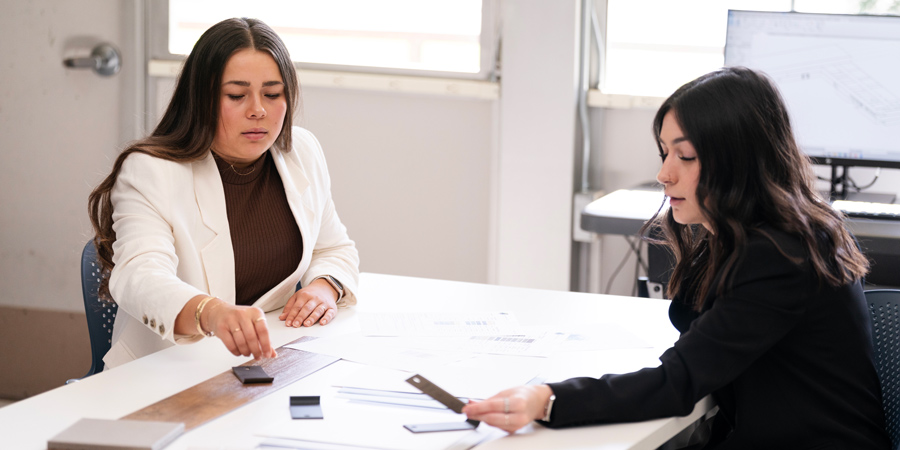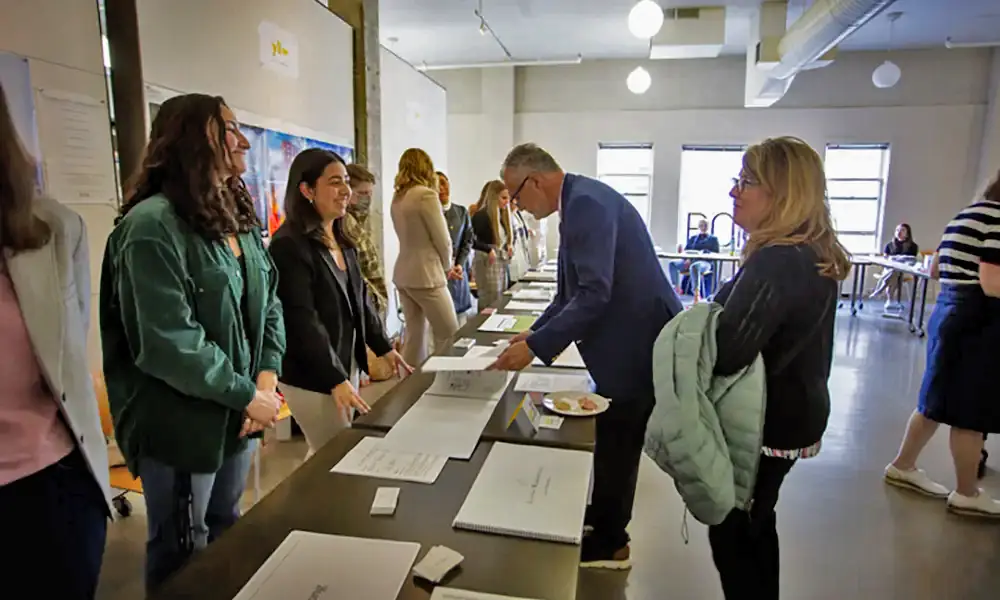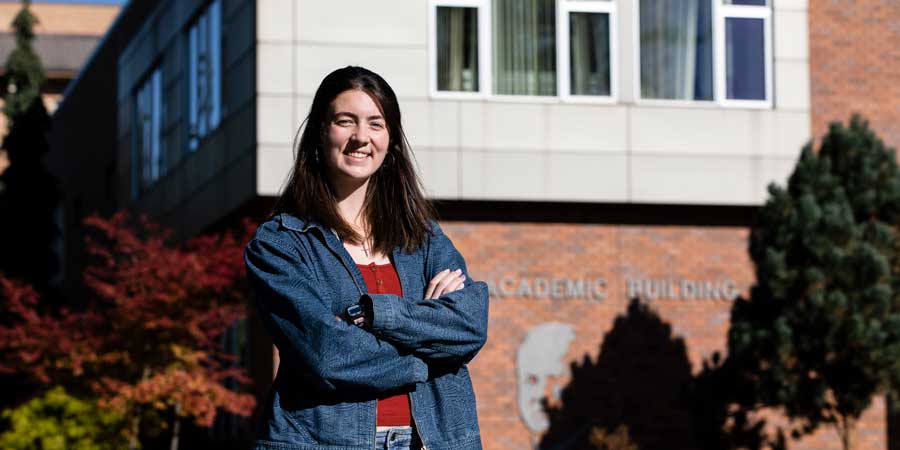
How Students Get Career Ready at an Interior Design School
Beyond simply creating inviting living spaces, interior designers are key players in the conceptual development, space planning, research, and design execution that goes into creating the buildings we live and work in.
And at George Fox, the interior designers of the future are engaged in work that is making a positive impact on our world, including projects to benefit nonprofits and houseless communities. Watch and listen as professor Casey Martin and her students reflect on the value of gaining real-world experience in the university’s interior design major.
Video Transcript
Casey Martin (interior design professor): People don’t generally understand the breadth of interior design. They don’t understand how much the interior designer does in a project. A lot of times people think like an architect or a structural engineer are doing the whole building, but in reality, it’s an entire team of people, and many of those people are interior designers.
We work with so many different trades and different types of pieces for the interior of a space. Literally, every single space that you’re in was designed probably at some point by an interior designer.
Hannah Farrugia (student): So, the class you’re in is the studio. The focus is real-world projects. We’re working on just a super wide range of projects that are actually being built, working with clients. This one here is the Forest Grove Foundation Service Hub. It is a hub for the houseless community in Forest Grove. working with, like, trauma-informed colors, furniture, all of that kind of stuff, and then working with a budget that a nonprofit might have.
Taylor Ho (student): So, Tyra and I are working on La Salle College Preparatory School in Pasadena, California, and we’re basically creating Revit models for some of the buildings there so that people like Casey and other architects and designers in the future have the plans and they can use them, and they’re easily accessible.
Ilinahe Beatty (student): This project that we have in front of us is the Kingsley Field Military Base in Klamath Falls.
Taylor Ho: We are working on sourcing everything U.S. made, taking an aesthetics package for them to implement into any future designs or current designs – kind of just a wide range of different finishes, and we also are working on furniture.
Casey Martin: Over the last two and a half years, we’ve worked on probably 30 different projects. Students also get paid for their work in this project, so every semester we have one paid project and then we have a whole bunch of unpaid projects. Personally, I think the real-world aspect of it is really exciting for the students. They get to really work on real projects, they get to see the site, they get to talk to the clients. That’s not always possible to simulate in a classroom environment, and so for them to be able to do that, it really gives them that capacity to learn all those things that we don’t learn in a normal project class.
Tyra Hayaski (student): I feel very prepared to go into the workforce. I feel very prepared to just see what’s out there.
Hannah Farrugia: I think, like, that's just exciting, like these people are really gonna be using this space and we get to play such a big part in designing it.
Casey Martin: They feel, like, when they graduate they can walk into a firm the next day and feel like they’re confident in their position and that they can actually do the work. And so creating this collaborative environment where we can actually really support each other is also really important.
I think also, though, a really big part of our program is creating amazing humans and making sure that we’re all working together. And I tell them a lot of times my favorite quote is, ‘A rising tide raises all boats.’ But, if one of us is doing well, we’re all doing well.





